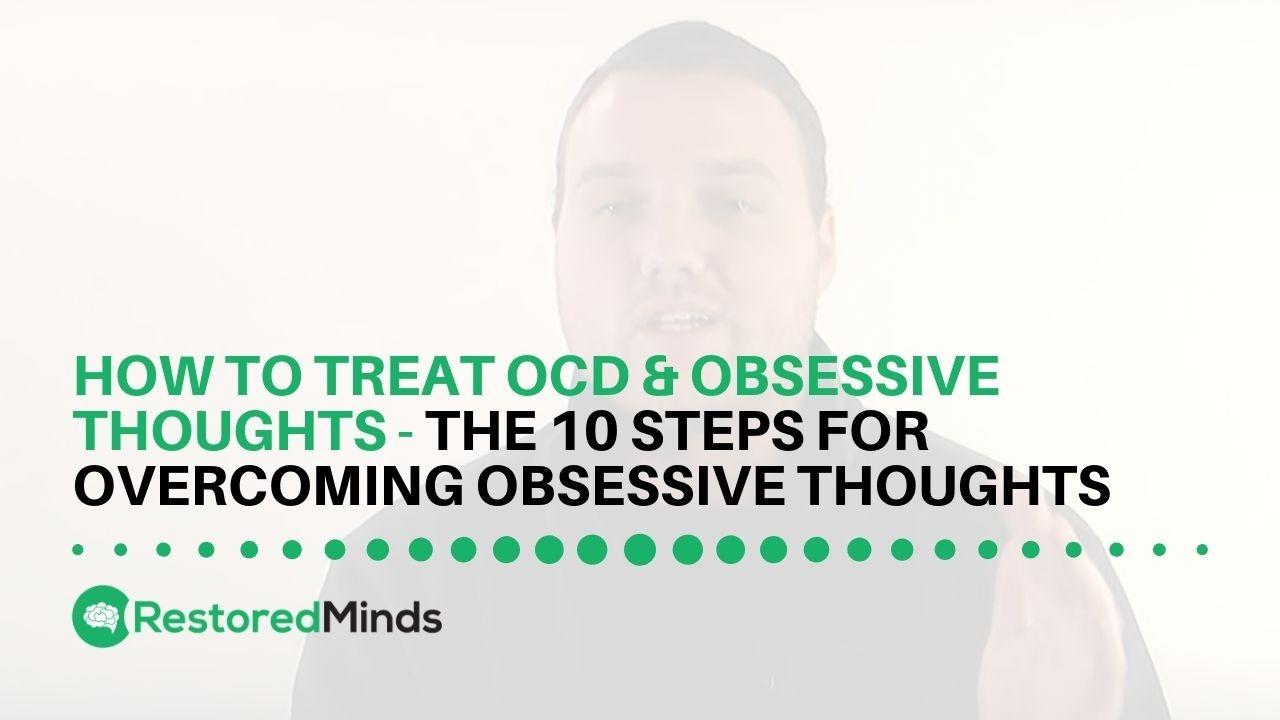The 10 Steps for Overcoming Obsessive & Intrusive Thoughts
Jul 17, 2017
10 Steps to Overcoming OCD: An Introduction with Restored Minds' Matt
Whether you're battling OCD yourself or supporting someone who is, these steps will set the foundation for overcoming this challenging condition.
Step 1: Developing the Proper Mindset Establishing the right mindset is crucial in battling OCD. Matt emphasizes the importance of seeing OCD as a battle you're determined to win. Adopting a victorious mindset significantly enhances your ability to drive OCD out of your life. Avoid the victim mentality and believe in your power to overcome it.
Step 2: Breaking Away from Labels Western society tends to label and pathologize, but it's essential to see OCD as only a fraction of who you are. Over-identifying with the disorder can perpetuate the problem. Break free from these labels and begin to re-identify with your true self, focusing on your strengths and individuality.
Step 3: Developing Your Dreams Dreams often get lost in the hustle of life. Unlike goals, dreams are personal and filled with passion. They are key to overcoming OCD because they provide motivation during tough times. Revive your dreams and let them fuel your journey to conquering OCD.
Step 4: Psychoeducation Understanding the inner workings of your mind is foundational in overcoming OCD. Psychoeducation involves learning about OCD and its impact on the brain. This knowledge makes it easier to engage in exposure and response prevention (ERP) therapies, knowing exactly why these steps are beneficial.
Step 5: Identifying Obsessive Thoughts and Compulsions It's vital to pinpoint the specific obsessive thoughts and compulsive behaviors you experience. Understanding this can help in effectively addressing and managing them through targeted interventions. This step forms the core of tailoring your treatment to your unique OCD patterns.
Step 6: Identifying the Root of the Fears Find the root causes of your fears to better tackle them. Identifying these roots allows you to face them directly in exposure therapy, leading to more effective treatment outcomes. Delving into the root fears requires courage but pays off in the long run.
Step 7: Accept, Sit, and Breathe Learn to accept intrusive thoughts without engaging with them. Practice sitting with the accompanying feelings and use diaphragmatic breathing to manage anxiety. This process helps in habituating to anxiety and reduces its intensity over time.
Step 8: Understanding the White Bears Recognize the 'white bear' phenomenon, where trying not to think about something makes you obsess over it more. This step is crucial as it helps you comprehend why exposure works and how to implement it effectively in your treatment.
Step 9: Exposure and Response Prevention (ERP) ERP is the cornerstone of treating OCD. It involves exposing yourself to feared stimuli and refraining from performing compulsions, promoting habituation to anxiety. Over time, this process diminishes the power of OCD, allowing you to regain control.
Step 10: Embracing Mindfulness Mindfulness replaces unhealthy compulsive behaviors with a healthy, life-affirming practice. Rooted in Buddhist traditions yet secular in practice, mindfulness helps maintain freedom from OCD by promoting a balanced, aware, and present-focused approach to life.
Conclusion: Stay tuned for the forthcoming detailed videos on each step. Matt will guide you through the nuances of each step, helping you build a robust plan to conquer OCD.


